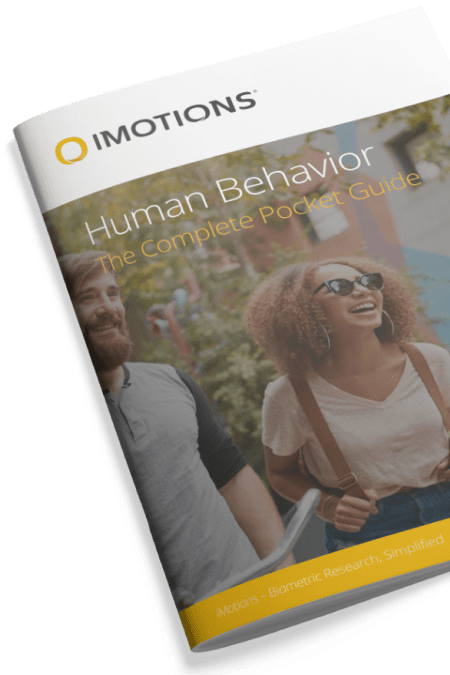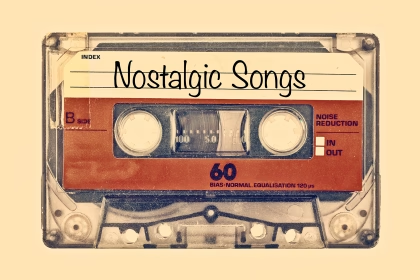The last year has featured many things, not least among them great scientific endeavors, experiments and adventures. We have witnessed breakthroughs and failed-breakthroughs, signs of promise, and strokes of ingenuity. There has been a renewed push for psychophysiological measurements as a means to delve deeper into non-conscious processes, and with emergent technologies in the mix, we are seeing an intertwining of old and new.
As the year draws to a close, we’d like to journey through some of the amazing scientific developments that have taken place. So join us on a rundown of our top 10 research articles from this year. We have chosen these articles in the field (and subfields) of human behavior research, based on the number of reads and popularity (with a little bit of a human touch too). Note that this list is only ordered chronologically – and we acknowledge that there are many more great pieces of research that have gone unmentioned here – but these are the articles that we believe have shaped the world of human behavior research the most this year. So, let’s begin.
1
Attention Alters Perceived Attractiveness
(Viola S. Störmer, George A. Alvarez)
We might pay attention to what matters, but what we pay attention to will also matter more – that is the finding from Viola Störmer and George Alvarez’s work into attention and attractiveness. They show how even complex, high-order perceptual properties – in this case attractiveness – can be shaped by attention. Ultimately, a gaze-contingency task with eye tracking was performed, demonstrating that facial attractiveness is judged to be stronger for faces that were attended to. So the next time you see someone you like – make sure to catch their eye. attractiveness attention research best year
2
The Not Face: A Grammaticalization of Facial Expressions of Emotion
(C. Fabian Benitez-Quiroz, Ronnie B. Wilbur, Aleix M. Martinez)
If you’re ever in disagreement with someone (anyone!), we have the perfect advice for you – action units 4, 14, 17, and 24. These are the codes from the Facial Action Coding System (FACS) for discrete facial movements that, in this case, give a universal expression of: “no” – otherwise known as “the not-face”. Researchers tested people from multiple cultures and countries (and signers of American Sign Language), finding that all we are all in agreement about how to disagree.
3
If You’re House Is Still Available, Send Me an Email: Personality Influences Reactions to Written Errors in Email Messages
(Julie E. Boland, Robin Queen)
If the above grammar error in the article title irks you, you might not be the kind to shout about it – yet you might be the kind who cares about it more than others. Researchers found that introverts are particularly prone to picking fault with faulty text – while extroverts are more like “whatevs”. Participants were asked to judge how much they would like a potential housemate based on a section of text, and completed surveys in Qualtrics. The biggest differences were for introversion / extroversion – which might be something to keep in mind, the next time you’re looking for a new place.
4
The Pandora Effect – The Power and Peril of Curiosity
(Christopher K. Hsee, Bowen Ruan)
Curiosity might kill the cat, but it looks like it could kill humans too.“The Pandora Effect” is the term used by the researchers to describe the sometimes irrational desire that humans have to resolve mystery, or satiate their curiosity. Within the study, participants were surreptitiously presented with the option to click prank pens that gave electric shocks. When the outcome was uncertain (i.e. it was unknown if the pens would deliver the shock), participants were much more likely to click them, than if the outcome was certain (i.e. it was known if a shock would or would not occur).
There doesn’t appear to be any reasonable reason why humans would subject themselves to possible electric shocks, just to know what a particular electric shock feels like, but this appears to be how we behave. This is in itself another mystery, which I’m sure we’ll get to the bottom of – whatever the cost.
5
Measuring Intuition: Nonconscious Emotional Information Boosts Decision Accuracy and Confidence
(Galang Lufityanto, Chris Donkin, and Joel Pearson)
Trust your gut – that’s the findings from this study into intuition. Participants were required to decipher the direction of dots – left or right – from a pool in which many were moving randomly. To add emotion into the mix, they were also shown – on a non-conscious level – emotionally charged images that would relate to the direction of the dots. With the aid of these images, participants were more likely to choose the direction correctly. When they measured the participant’s skin conductance response (SCR – also known as galvanic skin response, or GSR), they found that this was associated with the emotional feeling – suggesting that they both felt the emotions, and that the emotions guided them. So next time you “just have a feeling” – you could well be right.
6
Money Buys Happiness When Spending Fits Our Personality
(Sandra C. Matz, Joe J. Gladstone, David Stillwell)
The old adage that money can’t buy you happiness has been summarily overturned, but with a caveat – you need to spend it in the right way. What exactly the “right way” is, will depend on your personality. You’re probably a hip, cool, intelligent person (you’re reading this blog aren’t you?), so to maximize the joy from your paycheck, you should spend it things that reflect that. Researchers examined real bank accounts from people who completed personality tests, and found that the closest psychological fits with spending habits revealed the greatest happiness. This was also demonstrated in a controlled experimental paradigm. So spend away, selectively.
7
Eye-tracking Technology, Visual Preference Surveys, and Urban Design: Preliminary Evidence of an Effective Methodology
(Robert B. Noland, Marc D. Weiner, Dong Gao, Michael P. Cook, Anton Nelessen)
As the breadth of neuroscience grows, and the ease-of-use of technologies increases, we’ll continue to see a push into fields that have traditionally avoided using such apparently technical components. This will be true for many things, and is certainly now true for Urban Planning. The study synthesizes both the old and the new – combining subjective survey results with qualitative eye tracking data. The results demonstrate how urban areas can appear appealing (more people, and greenery – less cars, and car parking) while also showing a new direction for the field. This is research that really looks into the future (with no apologies for that terrible pun).
8
Automatic Analysis of Eye-Tracking Data for Augmented Reality Applications: A Prospective Outlook
(Simona Naspetti, Roberto Pierdicca, Serena Mandolesi, Marina Paolanti, Emanuele Frontoni, Raffaele Zanoli)
The future is always unpredictable, but a good bet would be that augmented reality will feature heavily within it. The use of eye tracking and augmented reality within this research shows that the area is continuing to mature, and be taken seriously. Studying 15th and 16th century art through the combination of these methods is indicative of the nature of current inquiry – anything is understandable – it just takes the right tools. Fortunately we’re now at that critical point.
9
How to Improve Adolescent Stress Responses: Insights From Integrating Implicit Theories of Personality and Biopsychosocial Models
(David S. Yeager, Hae Yeon Lee, Jeremy P. Jamieson)
Adolescence is a time of growth, and is particularly formative for personality – we learn about who we are and what we’re good at. This isn’t always a positive experience – as the researchers note in the very first line: “negative social evaluations are ubiquitous during adolescence” – which can shape the adolescent’s self-perception. This is reacted to by the research, that uses a psychological intervention to ultimately improve the participant’s stress appraisals, cardiovascular response (as measured by electrocardiography, or ECG), and improve their performance in a stressful task. This means that the changes that happen can move from the negative, to positive.
10
EEG to Primary Rewards: Predictive Utility and Malleability by Brain Stimulation
(Nicole Prause, Greg J. Siegle, Choi Deblieck, Allan Wu, and Marco Iacoboni)
This article shocks in more ways than one – the recruitment of participants through Craigslist, the questions of sexual activity, the vibrators used within the experiment, and the (almost) brain control that the researchers are capable of. Despite how that sounds, the science is sound. The experimenters were ultimately able to modulate the sexual behaviors of the participants through theta burst stimulation. They recorded through electroencephalography (EEG) that they could decrease alpha activity in response to rewards, increasing the suppression of desires. Self-control and brain stimulation – the future is now.
This has been our rundown of the best and most formative research of 2016. If you’d like to make the list next year, then we have just the thing to help you get started – our comprehensive guide to human behavior. Now bring on 2017.
Free 52-page Human Behavior Guide
For Beginners and Intermediates
- Get accessible and comprehensive walkthrough
- Valuable human behavior research insight
- Learn how to take your research to the next level












